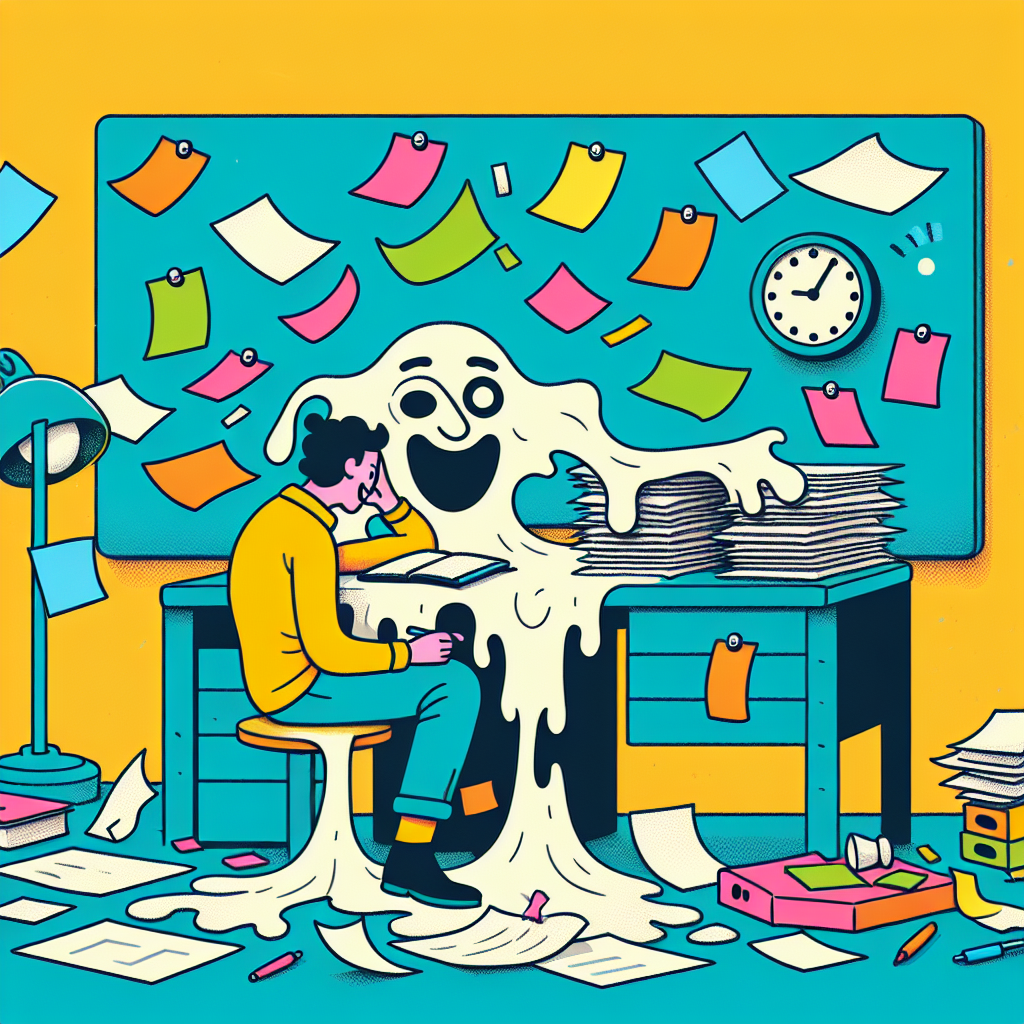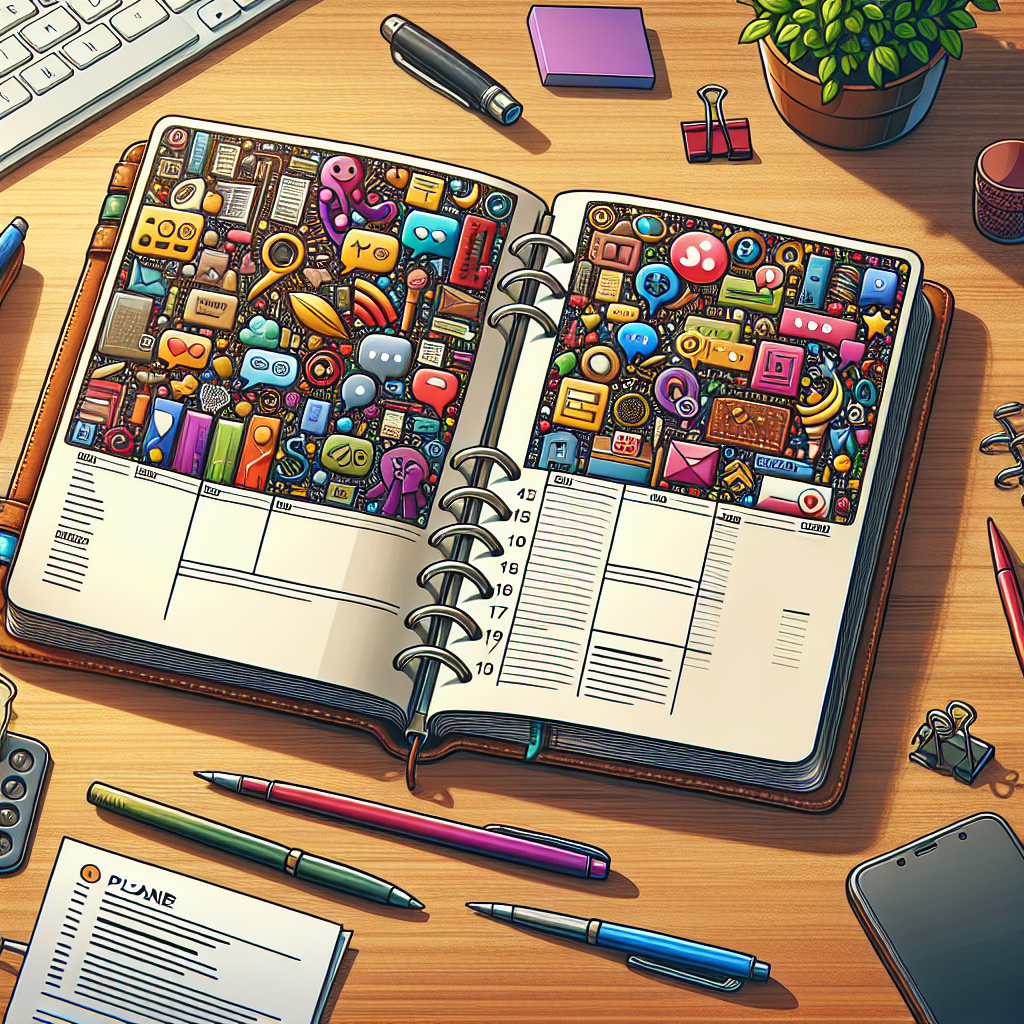
Time Management Revolution: ADHD-Friendly Methods to Take Control
Introduction
Welcome to the wild world of ADHD and time management, where clocks seem to tick differently, and deadlines often feel like they’re playing hide and seek. If you’ve ever found yourself staring at a to-do list that seems longer than a Netflix series, you’re not alone. Many adults with ADHD grapple with the elusive art of managing time effectively. But fear not! This blog post is your trusty guide through the chaos.
Think of time management for ADHD as a game of Tetris: you have to fit various pieces tasks, appointments, and maybe even some self-care into the limited space of your day without letting them stack up too high. Spoiler alert: it’s totally possible!
Did you know? Untreated ADHD can lead to decreased productivity and increased stress levels related to time management challenges. It’s crucial to find effective strategies that work for you! (NIMH)
This post will delve into practical ADHD time management strategies, from mastering scheduling techniques that actually make sense for your brain, to tackling procrastination like a pro. We’ll explore how ADHD affects focus, organization, and even prioritization skills think of it as your personal roadmap to transforming chaos into clarity.
So grab your favorite planner (or digital app if you’re feeling fancy), because we’re about to embark on a time-taming adventure that will help you conquer your day-to-day life with confidence! Ready? Let’s dive in!

Understanding ADHD and Time Management
When it comes to ADHD and time management, it’s like trying to catch a greased pig at a county fair tricky, slippery, and often frustrating! ADHD, or Attention Deficit Hyperactivity Disorder, affects how individuals perceive time, leading to what many refer to as time blindness. This phenomenon makes it incredibly challenging for those with ADHD to gauge how long tasks will take or when deadlines are looming.
Imagine you’re at a carnival. The rides are spinning, the lights are flashing, and you lose track of how long you’ve been there. This is similar to the experience of someone with ADHD trying to manage their time. They might start a task thinking it’ll take only a few minutes, only to realize hours have slipped away poof! Just like that!
Research indicates that individuals with ADHD often struggle with estimating time accurately. This can lead to missed deadlines and feelings of overwhelm. Recognizing this challenge is the first step towards developing effective strategies.
The Concept of Time Blindness in ADHD
Time blindness refers to the difficulty in perceiving the passage of time. For those with ADHD, this can manifest as:
- Difficulty prioritizing tasks based on urgency.
- Struggling to start or finish tasks due to poor time estimation.
- Tendency to procrastinate until the last minute.
This is where understanding how impulsivity affects personal scheduling outcomes becomes crucial. Impulsivity can lead individuals with ADHD to jump from one task to another without regard for deadlines or priorities like being a kid in a candy store who can’t decide which treat to grab first!
Strategies for Managing Time with ADHD
To tackle these challenges head-on, consider implementing some tailored strategies:
- Use Visual Timers: These can help make the abstract concept of time more tangible.
- Create Clear Deadlines: Break larger projects into smaller tasks with specific due dates.
- Acknowledge Peak Productivity Hours: Identify times during the day when focus is at its best and schedule challenging tasks accordingly.
The National Institute of Mental Health states that effective time management techniques can significantly improve productivity in adults diagnosed with ADHD.
By recognizing these unique challenges associated with managing time while living with ADHD, individuals can begin crafting personalized solutions that enhance their organization skills and overall productivity. Whether it’s through innovative scheduling techniques or simply using an ADHD daily planner, every little adjustment counts!
ADHD Time Management Strategies
Managing time with ADHD can feel like trying to herd cats each one going in a different direction, and you’re just left wondering where they all went! But fear not, fellow time wranglers! With the right ADHD time management strategies, you can transform your chaotic schedule into a well-oiled machine.
1. Embrace Personalization
First things first: one size does not fit all in the realm of ADHD and time management. What works like a charm for one person might be as useful as a chocolate teapot for another. Explore various strategies and find what resonates with your unique brain wiring.
2. The Power of Time Blocking
Enter the world of the ADHD time blocking method. This technique involves dividing your day into blocks of time dedicated to specific tasks or activities. Think of it as scheduling mini-adventures throughout your day! For example:
- 9 AM – 10 AM: Emails and admin tasks
- 10 AM – 11 AM: Creative brainstorming session
- 11 AM – 12 PM: Coffee break (because caffeine is life)
- 12 PM – 1 PM: Project work
3. Utilizing Timers and Alarms
If you’re prone to drifting off into daydreams or getting lost in endless rabbit holes, timers are your new best friends! Set alarms for each block of time, reminding you when to switch gears. This simple tool can significantly improve focus with ADHD and help you stick to your schedule.
4. Routines Are Your Safety Net
Create routines that structure your day with ADHD. Having a consistent morning routine can set the tone for productivity and help you avoid the dreaded morning chaos. Plus, routines reduce decision fatigue less thinking means more doing!
Key Takeaway: Personalizing your approach is crucial for effective time management for ADHD individuals. Experiment with different techniques, like time blocking and using timers, until you find what works best for you!
5. Mastering Prioritization Skills
Prioritizing tasks can feel overwhelming when managing deadlines with ADHD, but here’s a nifty trick: use the Eisenhower Matrix! Divide tasks into four categories:
| Urgent & Important | Important but Not Urgent |
|---|---|
|
|
| Urgent but Not Important | Neither Urgent nor Important |
|
|

A Word on Time Tracking
If you’re curious about where all those precious hours disappear to, consider implementing some form of time tracking for ADHD individuals. Apps like Toggl or RescueTime can provide insights into how much time you spend on various activities, helping you optimize schedules for those with ADHD.
Coping with distractions in ADHD requires understanding how impulsivity affects personal scheduling outcomes.
ADHD Productivity Tips
When it comes to ADHD and time management, finding your groove can feel like trying to catch smoke with your bare hands. But fear not! Here are some practical ADHD productivity tips that might just help you turn that smoke into a manageable cloud.
Identifying Peak Productivity Hours
First things first, let’s talk about those golden hours when your brain feels like a well-oiled machine. Identifying your peak productivity hours is crucial. Are you a morning person who can tackle tasks before the sun even rises? Or do you come alive at midnight, sipping coffee and conquering the world? Understanding when you’re most alert can help you schedule your toughest tasks during these times. Here’s how:
- Track Your Energy Levels: Keep a journal for a week, noting when you feel most focused.
- Experiment: Try working on different tasks at various times to see what works best.
- Adjust Accordingly: Once you’ve identified your peak hours, plan your day around them!
Coping with Distractions and Impulsivity
The ADHD brain is like a cat in a room full of laser pointers easily distracted! Here are some strategies for managing those pesky distractions and impulsive tendencies:
- Create a Distraction-Free Zone: Designate a specific area for focused work, free from clutter and interruptions.
- Use Timers: The Pomodoro Technique (25 minutes of work followed by a 5-minute break) can be incredibly effective for maintaining focus.
- Limit Multitasking: Focus on one task at a time to improve concentration and productivity.
Key Takeaway: Recognizing your productive periods and minimizing distractions can significantly enhance your time management skills with ADHD.
Utilizing ADHD Task Management Tools
The right tools can be game-changers. Whether it’s an app or good old-fashioned pen and paper, having the right systems in place helps streamline tasks. Consider using:
- ADHD Daily Planners: These planners are designed specifically to cater to the unique needs of individuals with ADHD.
- Task Management Apps: Tools like Todoist or Trello offer features that help prioritize tasks visually.
- Visual Reminders: Sticky notes or digital reminders can keep important tasks front of mind!
Avoiding Common Pitfalls
A common misconception is that people with ADHD simply lack willpower or motivation. In reality, it’s often about understanding how impulsivity affects personal scheduling outcomes. To avoid falling into this trap:
- Acknowledge Your Challenges: Recognize that impulsivity is part of ADHD don’t beat yourself up over it!
- Create Flexible Plans: Build in buffer times for unexpected distractions or delays.
- Praise Small Wins: Celebrate completing even minor tasks; it boosts motivation!
ADHD Organization Skills
When it comes to ADHD and time management, organization skills are like the trusty sidekick of a superhero. They help you navigate the chaotic world of tasks, deadlines, and appointments with finesse. Let’s dive into some practical strategies that can transform your daily chaos into smooth sailing!
Using Planners and Scheduling Techniques
First things first: if you haven’t tried an ADHD daily planner, what are you waiting for? Think of it as your personal time-travel device. You can map out your day, week, or even month in a way that makes sense to your brain. Here are some tips:
- Choose the Right Planner: Whether it’s digital or paper, pick one that resonates with you. Some people thrive on colorful bullet journals, while others prefer sleek apps.
- Color-Coding: Use different colors for different types of tasks work, personal, appointments to make everything visually appealing and easier to digest.
- Daily Check-Ins: Spend a few minutes each morning reviewing what needs to be done. This simple act can help with managing time with ADHD.
Implementing Routines
Routines might sound boring, but they’re like the foundation of a well-built house without them, everything crumbles! Here’s how you can structure your day with ADHD:
- Create Morning and Evening Routines: Establish predictable patterns for starting and ending your day. This can drastically improve focus and productivity.
- The Power of Micro-Routines: Break tasks into smaller chunks. For instance, instead of “clean the house,” try “pick up clutter in the living room for 10 minutes.”
- Use Timers: Set timers for specific tasks to create urgency and keep distractions at bay. It’s like having a personal coach cheering you on!
Quick Tip: Experiment with different routines until you find what clicks! Flexibility is key when managing time with ADHD.
Avoiding Common Pitfalls
No one wants to fall into the trap of disorganization! Here are some common mistakes to sidestep:
- Overloading Your Schedule: Keep it realistic don’t cram too many tasks into one day or you’ll end up feeling overwhelmed.
- Avoiding Technology: Embrace tools that can assist in organization. Apps like Todoist or Trello can be game-changers!
- Lack of Review Time: Don’t forget to review your progress weekly. Reflect on what worked and what didn’t; this is critical for improving focus with ADHD.

The journey towards mastering ADHD organization skills isn’t always smooth sailing, but by implementing these strategies, you’ll be well on your way to becoming the captain of your own ship! Remember: it’s about finding what works best for you and sticking with it.
Time Management Tips for ADHD Adults
If managing time feels like trying to herd cats, you’re not alone. Adults with ADHD often face unique challenges when it comes to time management. Luckily, there are strategies that can help you regain control of your schedule and boost your productivity.
The Role of Timers and Alarms
Timers and alarms are your new best friends. Think of them as your personal cheerleaders, reminding you to stay on track. Whether it’s a classic kitchen timer or a fancy app, using these tools can help you break tasks into manageable chunks. For instance:
- Pomodoro Technique: Work for 25 minutes, then take a 5-minute break. Repeat.
- Time Blocking: Allocate specific blocks of time for different tasks this is especially effective for managing deadlines with ADHD.
- Daily Reminders: Set alarms for important appointments or deadlines to avoid last-minute panic.
Strategies for Managing Deadlines and Appointments
Deadlines can feel like a looming cloud of doom, but with the right strategies, they become manageable rain showers instead. Here are some tips to keep you afloat:
- Create a Visual Schedule: Use calendars or planners that appeal to you visually think colors, stickers, or even digital apps that provide reminders.
- Prioritize Tasks: Not all tasks are created equal. Use an Eisenhower Matrix to distinguish between what’s urgent and important versus what can wait.
- Avoid Overcommitting: It’s easy to say yes when you’re feeling motivated! But remember: balancing work and life with ADHD means knowing your limits.
Key Takeaway: Effective time management for ADHD involves using tools like timers and planners while prioritizing tasks based on urgency and importance.
Coping with Time Blindness
Coping with time blindness is crucial in managing your day effectively. Consider these techniques:
- Set Time Limits: When starting a task, estimate how long it should take and set a timer accordingly. This helps anchor your perception of time.
- Regular Check-Ins: Schedule short breaks every hour to assess where you are in relation to your goals this helps improve focus with ADHD.
- Create Routines: Establishing consistent daily routines can help structure your day and reduce decision fatigue about what to do next.
ADHD Task Management Techniques
Alright, let’s dive into the nitty-gritty of ADHD task management techniques that can transform your day from chaotic to productive. Think of it as your personal toolkit for managing time with ADHD no more fumbling around in the dark!
The ADHD Time Blocking Method Explained
Time blocking is like scheduling a date with yourself, but instead of brunch with friends, you’re meeting up with tasks. This technique involves setting aside specific blocks of time for particular activities. Here’s how to make it work:
- Identify your peak productivity hours: Are you a morning person or a night owl? Schedule your most challenging tasks during those times.
- Break tasks into chunks: Instead of tackling an entire project at once, break it down into smaller, manageable parts and block out time accordingly.
- Use visual aids: Color-coded calendars or apps can help you see your blocks at a glance and keep distractions at bay.
Balancing Work and Life with Effective Planning Techniques
For many adults with ADHD, balancing work and life can feel like juggling flaming swords while riding a unicycle thrilling but potentially disastrous. Here are some effective planning techniques to keep everything in check:
- Implement routines: Establish daily routines that incorporate both work tasks and personal time. This creates structure and helps manage time effectively.
- Prioritize tasks using the Eisenhower Matrix: Categorize tasks based on urgency and importance to focus on what truly matters.
- Set clear goals: Break down larger goals into actionable steps. This not only makes them less daunting but also provides a sense of accomplishment as you check them off.
Key Takeaway: Effective task management for ADHD isn’t just about getting things done; it’s about creating an environment where you can thrive while managing distractions and impulsivity.
Coping with Time Blindness
If you’ve ever lost track of time while binge-watching your favorite series (guilty!), then you know all about time blindness in ADHD. To combat this phenomenon, try these strategies:
- Use timers and alarms: Set reminders for when to start or stop tasks. This helps create a sense of urgency without overwhelming you.
- Visual countdowns: Use apps that provide visual representations of how much time is left for a task it’s like having your own personal cheerleader reminding you to stay on track!
- Regular breaks: Schedule short breaks between blocks to recharge and reset your focus.

Coping with Procrastination in ADHD Adults
Procrastination can feel like that annoying friend who just won’t leave your side, especially for adults navigating the complexities of ADHD and time management. It often stems from a mix of challenges unique to ADHD, such as time blindness, impulsivity, and difficulty prioritizing tasks. But fear not! With the right strategies, you can kick procrastination to the curb.
Understanding the Roots of Procrastination
First things first: let’s get to the bottom of why procrastination is such a common pitfall for those with ADHD. It’s not just about being lazy or disorganized; it’s often linked to:
- Time Blindness: The inability to perceive time accurately can lead to underestimating how long tasks will take.
- Overwhelm: When faced with too many choices or a daunting task list, it’s easy to freeze up and do nothing instead.
- Impulsivity: The allure of more exciting distractions can pull attention away from essential tasks.
Tips for Overcoming Lateness and Improving Focus
Now that we’ve unraveled some reasons behind procrastination, let’s dive into practical tips that can help you manage your time better:
- Break Tasks into Smaller Steps: Large tasks can feel like climbing a mountain. Instead, break them down into smaller, manageable steps. This makes it easier to start and helps maintain momentum.
- Use Timers: Set a timer for short bursts of focused work (like the Pomodoro Technique). Work for 25 minutes, then reward yourself with a 5-minute break. This technique not only combats procrastination but also enhances productivity.
- Prioritize Tasks: Use an ADHD-friendly daily planner to prioritize your tasks based on urgency and importance. This way, you’re less likely to waste time on low-priority items.
- Schedule Breaks: Don’t forget to include breaks in your schedule! Allowing yourself downtime can actually improve focus when you return to work.
- Identify Your Peak Hours: Everyone has times during the day when they feel most alert and productive. Identify yours and tackle challenging tasks during these windows.
Takeaway: Coping with procrastination requires understanding its roots and implementing effective strategies tailored to your unique challenges as an adult with ADHD. Start small, stay organized, and remember: every little step counts!
Conclusion
As we wrap up this time management revolution, remember that mastering ADHD and time management is not just a distant dream but a tangible reality waiting for you to seize it. By implementing the right ADHD time management strategies, you can transform your daily chaos into organized bliss.
Think of time management with ADHD like learning to ride a bike. At first, it feels wobbly and uncertain, but with practice and the right techniques like using ADHD scheduling techniques or the ADHD time blocking method you’ll find your balance. And trust me, once you hit that sweet spot of productivity, you’ll be cruising along with confidence!
Key Takeaways:
- Identify your peak productivity hours to maximize focus.
- Utilize timers and alarms to keep distractions at bay.
- Create structured routines that cater specifically to your needs.
- Avoid procrastination by breaking tasks into manageable chunks.
Don’t forget that improving focus with ADHD doesn’t happen overnight. It’s a journey filled with trial and error and maybe a few detours along the way. So, embrace those quirks of your brain! They are not obstacles; they are opportunities to develop unique ADHD organization skills.
If you’re feeling overwhelmed, consider using an ADHD daily planner. This tool can be a game-changer in managing appointments and deadlines effectively. Plus, it adds an element of fun to planning who doesn’t love crossing off completed tasks?
Ultimately, the goal is not just about managing time; it’s about creating a life where you feel in control and empowered. So go ahead, experiment with these strategies, find what resonates with you, and take charge of your schedule. Remember: every small step counts towards achieving your big goals!


